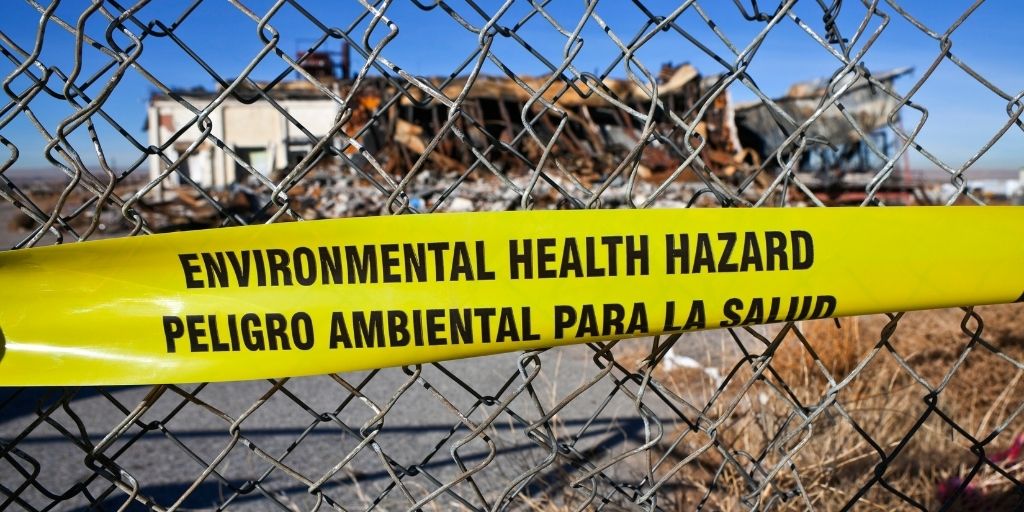What Is a Records Search and Risk Assessment (RSRA)?
REtipster does not provide legal advice. The information in this article can be impacted by many unique variables. Always consult with a qualified legal professional before taking action.
What Is an RSRA For?
The RSRA is a screening tool that evaluates a specific piece of commercial real estate for possible environmental risks that may directly impact a lender or investor.
It is sometimes referred to as a Desktop Review because this type of risk assessment does not require an in-person visit to the property by an environmental professional. Everything is done on a computer—hence the term “desktop.”
This report is a minimum first step requirement in the process of completing environmental due diligence for the SBA 504 and SBA 7(a) loan programs. This requirement aligns with the organization’s standard operating procedures (SOP) for its Lender and Development Company Loan Programs[1].
Why Is the RSRA Required for the 504 and 7(a) Loans?
The RSRA is a due diligence requirement for commercial real estate loans backed by the SBA, particularly the 504 and the 7(a).
An SBA 504 loan is used to finance the purchase of commercial real estate, fixtures, and equipment. Other uses of the 504 loan include funding ground-up construction projects or improving existing structures that will lead to increased job creation and economic growth.
On the other hand, an SBA 7(a) loan has a variety of uses, including the purchase of real estate, equipment an existing business, or even extra working capital. Borrowers can also use the 7(a) to refinance current business debt and buy business-related supplies and fixtures.
Both the 504 and 7(a) are types of business loans backed by the SBA and deal with commercial real estate. The SBA demands an environmental investigation for all commercial properties where a security interest is collateralized for a loan or debenture that they are guaranteeing.
Other Uses of the RSRA Report
While the RSRA report can often be used to fulfill the environmental due diligence requirements for an SBA 504 or 7(a) loan that involves commercial real estate collateral, its use is not restricted to only SBA deals.
Many non-SBA lenders use the RSRA as a risk-screening tool as part of a comprehensive environmental risk management policy.
The RSRA report provides a distinct advantage over commonly used risk screening tools because it utilizes historic information and the professional opinion of an environmental expert. This makes it a highly reliable, low-cost tool for environmental risk evaluation for non-SBA loans.
How Is the RSRA Conducted?
The RSRA uses documented records and historical information to evaluate the likelihood of subsurface contamination risk at a particular property. It pulls data from relevant government database resources, such as historical topographic maps, city directories, aerial photography reports, fire insurance maps, and so on.
The RSRA process includes a review of the property’s North American Industry Classification System or the NAIC code[2]. NAIC is the standard for classifying business establishments in the U.S. These codes can be 3-, 4-, 5-, or 6-digit numbers depending on the type of industry.
Lastly, the assessment includes completing an Environmental Questionnaire[3] to obtain information about any environmentally sensitive operations carried out on-site or on adjacent properties.
An environmental professional reviews, interprets, and compiles these pieces of information into a simple-to-understand report known as the RSRA.
What Does the RSRA Report Include?
The main takeaway from an RSRA report is whether the evaluated property has a High or Low Environmental Risk.
Typically, an environmental professional backs this assessment with a written discussion of the relevant data. In it, the environmental expert explains the methodology of the review and the sources of the data they used. The report will also contain the NAICS code and the completed Environmental Questionnaire.
Because the RSRA process does not include a physical site inspection, the scope of the report is somewhat limited. As such, it cannot be used to make definitive or legal conclusions and recommendations.
On the flip side, the absence of an on-site evaluation means the RSRA is a cost-effective initial screening tool for meeting the SBA’s environmental due diligence requirement.
What Happens After the RSRA?
If the results of an RSRA reveal that the property has a low risk of environmental contamination, no further investigation is needed (meaning, the property has passed the SBA requirement). The SBA will review and approve a copy of the RSRA for its concurrence, along with an environmental questionnaire, signed by the loan applicant and the lender.
On the other hand, if the RSRA indicates that the property has a high or elevated risk for contamination, the property must undergo a more comprehensive environmental risk evaluation known as the Phase I Environmental Site Assessment (ESA).
The Phase I ESA is much more comprehensive than an RSRA and requires an on-site physical assessment by the environmental professional. It also expands its search of the property in question by reviewing larger databases and interviewing past and current property owners, occupants, or operators.
On average, this process can take around two to four weeks to complete[4] and is usually more expensive. When a Phase I ESA is required, it is a critical tool that can detect possible environmental concerns that ccould create liability issues for the property owner and possibly the lender in the future.
Overall, a Phase I ESA report should satisfy the requirements outlined in the Comprehensive Environmental Response, Compensation and Liability Act (CERCLA)[5].
When to Get an RSRA Report
There are two main determinants as to when to order an RSRA report.
- When the property type is not listed on the NAICS code list of environmentally sensitive industries. In this case, the environmental due diligence must include an RSRA report. This is the minimum requirement as stipulated by the SBA’s SOP document.
- When the loan amount exceeds $250,000. An RSRA is a requirement for loan amounts exceeding $250,000. If the loan amount is less than $250,000, the Environmental Questionnaire may suffice, provided the results do not indicate that the property has a high risk of contamination.
Note that any recommendations provided in the RSRA report must be fully implemented. Failure to follow these recommendations can result in the SBA refusing to guarantee the loan.
What Makes the RSRA Report a Great Resource?
- Risk Detection — Huge risks and costs can arise from financing or owning a contaminated property. An RSRA report helps highlight environmental risks, improving decision-making among lenders, investors, owners, and other stakeholders.
- Faster Results — Compared to more extensive screening measures like the Phase I ESA, the RSRS delivers faster results. This decreases the overall loan-to-approval time of a property.
- Low-Cost Solution — Because it relies on readily available records and does not require an on-site visit, an RSRA report is a cost-effective tool for assessing potential environmental risk.
- Easy-to-Understand Results — An RSRA report categorizes a property’s environmental risk as either “low” or “high.” This result is easy to grasp and requires no lengthy interpretations.
Takeaways
- The RSRA is an environmental due diligence report that the Small Business Administration requires for some types of commercial loans, particularly the SBA 504 and SBA 7(a) loans.
- It evaluates a particular piece of property for possible environmental issues that may directly impact lenders or investors.
- An environmental professional reviews the results of the RSRA evaluation and summarizes it into a “High” or “Low” risk status for the subject property. If the property has a high environmental risk, it must undergo a more comprehensive type of evaluation known as the Phase I ESA.
Sources
- Small Business Administration. (n.d.) SOP 50 10 6. Lender and Development Company Loan Programs. Retrieved from https://www.sba.gov/document/sop-50-10-lender-development-company-loan-programs-0
- North American Industry Classification System. (n.d.) NAICS & SIC Identification Tools. Retrieved from https://www.naics.com/search/
- Partner Engineering and Science, Inc. (n.d.) SBA Environmental Questionnaire. Retrieved from https://www.partneresi.com/resources/library/sba-environmental-questionnaire
- Millman National Land Services. (2021). What Exactly Is a Phase 1 Environmental Site Assessment? Retrieved from https://millmanland.com/company-news/phase-1-environmental-site-assessment/
- Environmental Protection Agency. (n.d.) Superfund: CERCLA Overview. Retrieved from https://www.epa.gov/superfund/superfund-cercla-overview







